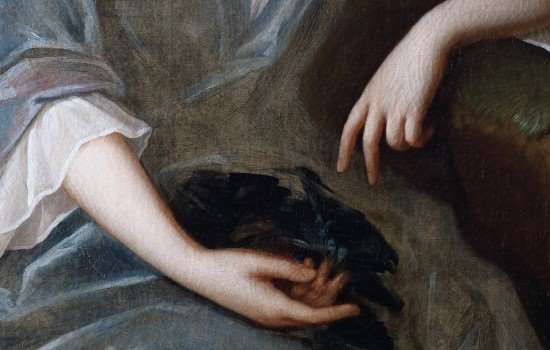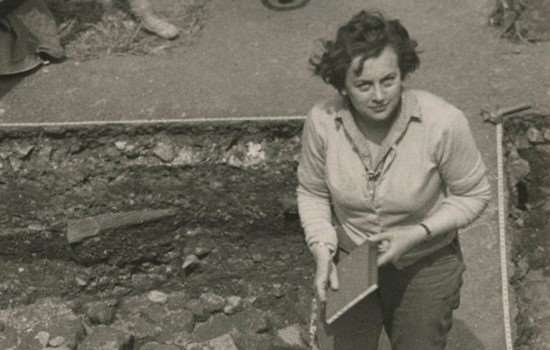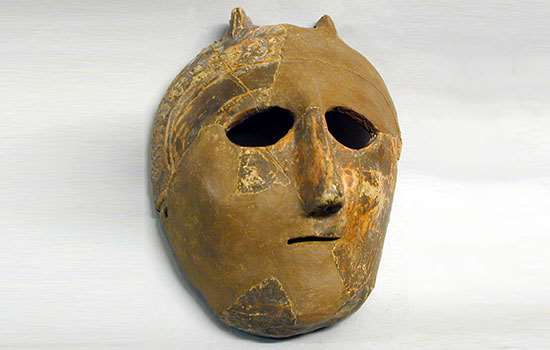Inspiring inclusion
Women’s History Month in 2024 is focusing on women who advocate for equity, diversity and inclusion. Many of the women recognised by our blue plaques scheme have devoted themselves to these causes. Follow the links below to discover just some of their stories.
Women and the medieval church
In medieval England, women could find many different ways of expressing their religious aspirations – whether as members of monastic communities or in the wider world. Discover some of the ways in which women contributed to religious life, and how their roles were valued within Christian belief and practice.
-

Nuns in medieval England
Four of the monastic sites English Heritage cares for were once home to nuns. Their histories illuminate the important role of nuns and nunneries in medieval English monasticism.
-

Women in male monasteries: an illicit presence?
Strict rules were in place to ensure that monks had minimal contact with women in medieval monasteries. But could they even have functioned without women?
-

Women at Haughmond Abbey
Haughmond Abbey in Shropshire provides strong evidence of how much women were accepted and valued for their role in Christian belief and practice, even in a male monastery.
-

St Hild of Whitby
As abbess of Whitby in the 7th century – a ‘double monastery’ for both nuns and monks – Hild led one of the most important religious centres in the Anglo-Saxon world.
Artists and Muses
Explore some of the women who have placed their mark on the history of art, either as creators, muses or both. Their stories have often gone untold or overshadowed by their male contemporaries.
-

Women in the Arts
Explore the lives and work of some of the female painters, sculptors and artists whose creations either form part of our collections or have helped us to tell the stories of English Heritage sites.
-

Maria Verelst
Although unusual for a woman to be a professional artist during her time, Verelst established a succcessful career painting for the landed gentry and aristocracy – her works found in historic homes around Britain including Audley End.
-

Emma Hamilton
Discover how George Romney’s many portraits of Emma, Lady Hamilton, including The Spinstress, propelled its subject to fame and helped secure a legacy for her as more than Nelson’s mistress.
-

Marie Spartali Stillman
Spartali Stillman was one of a small number of professional women artists in the late 19th century. As well as being an admired painter in watercolour she was an artist’s model for Pre-Raphaelite artists such as Burne-Jones and Rossetti.
Untold Stories
Read about some of the women whose stories have slid under the radar. Their achievements – big and small – have made a significant contribution to our lives today, yet often go unrecognised in history.
-

Women and Garden Design
We discover some of the women who played a key role in designing the gardens now in the care of English Heritage.
-

Groundbreaking Female Archaeologists
Read about some of the female archaeologists who worked on sites now cared for by English Heritage.
-

A Journey into Witchcraft Beliefs
Step into the world of early modern England as Professor Diane Purkiss describes popular and intellectual beliefs about witchcraft in the 16th and 17th centuries.
-

Bridget Atkinson, Georgian Shell Collector
Bridget Atkinson (1732–1814) was an avid collector of shells who amassed a remarkable collection of more than 1,200 items from around the world.
-

Weeding Women: Shaping England's Gardens
Explore the unsung role of ‘weeding women’ in the history of English gardens, and the difficulties of tracing their stories.
-

Experiments in Gender
Exploring the women who adopted masculine styles of dress and the increasingly fluid ideas about gender identity and sexuality in the early 20th century.
-

The Wrest Park Nurses
Find out about the lives of some of the women who worked at Wrest Park when the house was transformed into a WWI hospital.
Discover more Women in history
Select the images below to learn about more inspiring women from history. All of them are closely linked with places looked after by English Heritage, or are commemorated in London by our blue plaques scheme.
Record number of women celebrated with Blue Plaques in 2024
For the first time in the history of the London Blue Plaques scheme more plaques will be unveiled to individual women in 2024 than in any previous year.
2024’s unveilings include Christina Broom, believed to have been Britain’s first female press photographer; Diana Beck, celebrated as the UK’s first female neurosurgeon; and Adelaide Hall, one of the first black women to secure a long-term contract at the BBC.
We launched the ‘plaques for women’ campaign in 2016, encouraging the public to nominate more remarkable female figures from the past. Recent recipients of a blue plaque include Princess Sophia Duleep Singh, Jean Muir and Dame Barbara Hepworth.
Discover moreQueens of the Past
-

Cartimandua – Queen of the Brigantes
Ruler of the Brigantes, an Iron Age people of northern Britain, Cartimandua was an important ally of the Roman Empire during the conquest.
-

The Eleanor Crosses: A Journey Set in Stone
Discover the story of the beautiful stone crosses erected by King Edward I in memory of his beloved first wife, Eleanor of Castile.
-

Mary Queen of Scots at Carlisle Castle
In 1568, Mary Queen of Scots fled conflict and turmoil in Scotland for England. Find out how and why her two-month stay at Carlisle Castle began 19 years of captivity.
-

Queen Bertha
In 597, St Augustine arrived in England to convert the Anglo-Saxons to Christianity. How important was Queen Bertha of Kent, who was already a Christian, in his mission’s success?
-

Eleanor of Aquitaine
Eleanor of Aquitaine was queen in turn of two great medieval European powers, France and England. Read more about her life and the very active role she played in the politics of her day.
-

Queen Victoria
Find out about Queen Victoria and how her reign of over 63 years shaped England during a period of immense political, social and cultural change which saw a great expansion of the British Empire.
-

Joan of Navarre
Read about Joan of Navarre, who was imprisoned at Pevensey Castle in 1420 accused of witchcraft and plotting to kill the king.
-

Mary Tudor, England’s First Queen
Discover the story of how Mary Tudor was proclaimed the first woman ruler of England while she was at Framlingham Castle in Suffolk in 1553.
-

Elizabeth I
Tracy Borman examines what the accession of Elizabeth I – who famously remained unmarried – meant for women in positions of power.
-

1066: The Power behind the Throne
Find out about the roles of three queens in the period around the Norman Conquest who helped shape the events of 1066.
Listen to our Podcast
Join us as The English Heritage Podcast explores the fascinating stories of women associated with our sites.
Want more? Listen to the full 'Women's History with English Heritage' playlist here.
-
Episode 151 - The extraordinary life and times of Eleanor of Aquitaine
-
Episode 101 - Woman at war: Eleanor de Montfort at Dover Castle
-
Episode 20 - Mary Tudor and the succession crisis at Framlingham Castle in Suffolk
-
Episode 98 - Eleanor of Castile: Spanish princess and English queen
-
Episode 113 - Painting a portrait of Sarah Forbes Bonetta at Osborne
-
Episode 103 - The remarkable working women at our historic houses
-
Episode 52 - The remarkable women who changed history at our sites
-
Episode 49 - The blue plaque women who changed the course of English history
Explore more
-

Eight Myths About Witchcraft
Professor Diane Purkiss tackles the common misconceptions about witchcraft and the witch trials of the 16th and 17th centuries.
-

LGBTQ History
LGBTQ history has often been hidden from view. Find out more about the lives of some LGBTQ individuals and their place in the stories of English Heritage sites.
-

Listen to Speaking with Shadows
The podcast that listens to the people that history forgot. From castles on the south coast to Hadrian’s Wall in the far north, join presenter Josie Long as she seeks out stories from the hidden corners of England’s history.
-

Below Stairs at Audley End
What were Victorian servants’ lives really like? Discover the stories of the men, women and children who worked at Audley End House in the 1880s.






